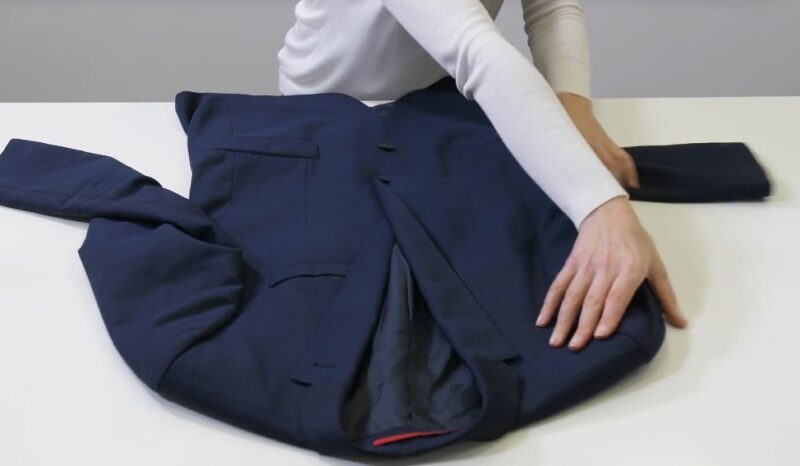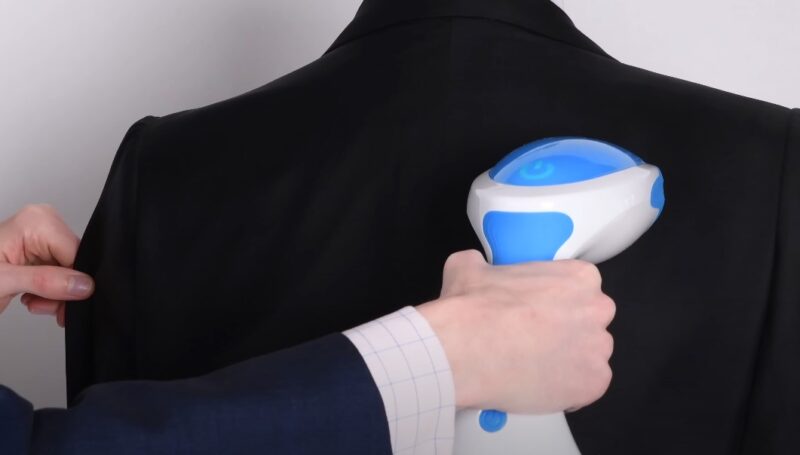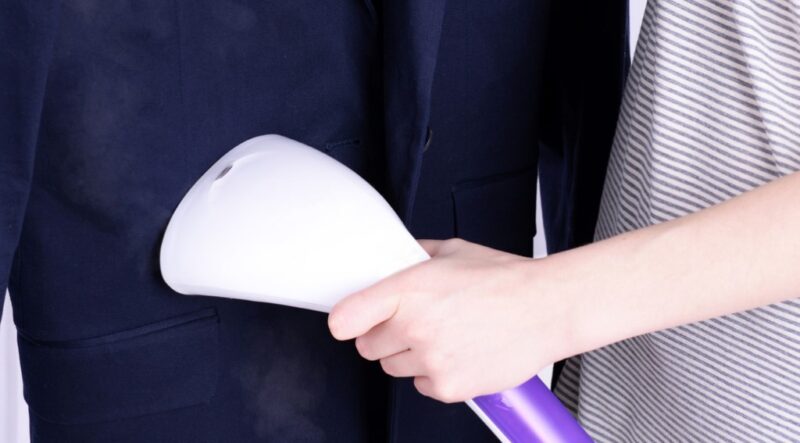First of all, let me start by saying that you probably should dry clean your suits and sports coats … Just not as often as you might think! This guide will show you how to freshen up your suit at home.
You will keep your suits looking (and smelling) fresh while spending less for dry cleaning.
Why You Should Not Dry Clean Your Suits (So Often)

A New York Times article entitled “Dry Cleaning Your Wool Sweaters? Don’t Bother” also covered the subject of dry cleaning men’s suits. Here’s an excerpt: Martin Greenfield, owner of custom tailor shop Martin Greenfield Clothiers, told us wool rarely needs dry cleaning.
“Wool is an animal’s hair — they don’t get dry cleaned. They go out in the rain.” He recommends that his clients spot-clean and steam-press their suits, which restores the natural finish. “We find the dry cleaning fluid to be very caustic on fine wools, so we try to avoid it as much as possible,” he explained. Dry cleaning certain delicate fabrics may also shorten their life span, causing them to lose their luster and contributing to wear and tear.
“The clothing gets tossed into a machine with a spin cycle — it’s pretty rough on hand-tailored clothing,” Mr. Greenfield said. Nearly all custom and bespoke tailors like Martin Greenfield (who has dressed presidents, captains of industry, and celebrities) tend to give the same advice; Dry clean your suits as little as possible.
Traditionally, the highest quality handmade suits are rarely, if ever, dry cleaned. Instead, the traditional ‘sponge and press’ technique is used to clean bespoke tailored suits by hand. This method has been used since Victorian times to clean the attire of kings and queens.
This process involves removing stains & spots from your suit by hand, lightly cleaning the entire garment by hand and finishing up with a hand press and steam. In fact, Saville Row tailors clean the bespoke suits of their clients in this manner, using dry cleaning only when a suit is heavily soiled.
How to Freshen Your Suits at Home

A modern tool that updates the ‘sponge and press’ method is a clothes steamer. By steaming the lining and outer shell of your suit, you refresh the look and feel of the fabric, remove odors caused by bacteria (it kills any bacteria lingering in the fabric), and well as instantly kill any moth larva and dust mites that may be attracted to your suits and sportcoats.
The video below provides a guide on using a clothes steamer on a suit. Before using the clothes steamer, use a clothes brush to remove any dust and soil from the suit. Steam is a great way to clean suits without harming the fabric. Really, unless a suit is visibly dirty, this is all you need to do a good cleaning of your suit.
The less you expose your suit to the harsh chemicals of dry cleaning, the longer it will last (and look great). The basic principles of suit maintenance discussed here have been automated in such products as the LG Styler Steam Clothing Care System that retails for $1.999.99 and the Whirlpool Swash at $399.00.
These high-priced appliances basically do the same thing you can easily do with an inexpensive hand-held clothes steamer and a spritz of Febreze Fabric Refresher (to add a nice scent). A portable clothes steamer can be purchased for well under $30.00 that will do the job just as well!
After you have freshened your suit with a clothes steamer, it will require a good pressing with a steam iron to look its best. Pressing a suit is a skill that is mastered with a bit of practice. I would recommend practicing on a cheap thrift shop suit or one that can be discarded to master this skill if you are not proficient.
How to Press a Suit Properly
The video below shows both the tools needed and the technique for properly pressing a suit. The sleeve board demonstrated in this video is an essential but inexpensive tool that will enable you to press a suit with wrinkle-free professional quality results.
It does a better job than a flat ironing board of retaining the shape of your suit as you iron. A pressing cloth is also needed to prevent scorching suit fabric when ironing, and this can be made from a clean old cotton shirt or sheet.
With these techniques, you can do a great job of cleaning and pressing suits that are not heavily soiled (heavily soiled or stained suits are best left to the dry cleaning professionals). You will extend the life of your suits and preserve their good looks as well.
Plus, you can save money! I use these techniques to clean all of my second-hand suits purchased at thrift shops and online. Because I buy high-quality suits in like-new condition, I want to maintain them for long term use. These techniques are a low-cost way to care for your second-hand men’s suits and sportcoats.
Final Thoughts
While dry cleaning is sometimes necessary for heavily soiled suits, you can effectively freshen and maintain your suits at home with a few simple techniques.
Using a clothes steamer to kill bacteria and remove odors, coupled with regular brushing and occasional pressing, can keep your suits looking and smelling great without the harsh chemicals and cost of dry cleaning.
By adopting these methods, you’ll extend the life of your suits, preserve their quality, and save money. Whether you’re caring for high-end bespoke suits or thrift store finds, these tips ensure your wardrobe remains sharp and stylish.

